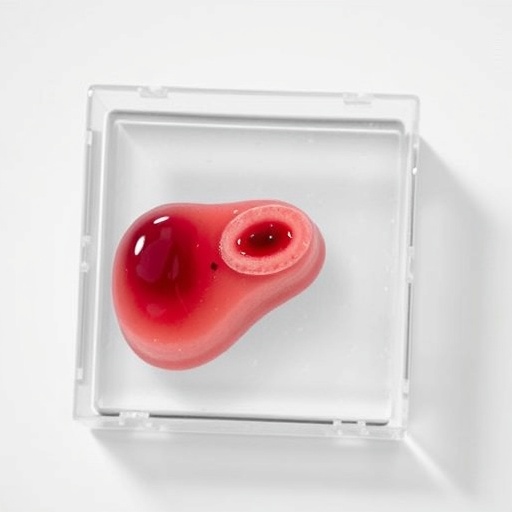
In recent years, the landscape of chronic lymphocytic leukemia (CLL) treatment has undergone transformative changes, particularly with the emergence of targeted therapies that focus on specific pathways associated with cancer progression. One such promising therapy is Orelabrutinib, a Bruton’s tyrosine kinase (BTK) inhibitor that has been at the forefront of discussions regarding its real-world effectiveness in managing CLL and small lymphocytic lymphoma (SLL). A recent study conducted by Wang et al. meticulously explores the clinical outcomes of patients treated with Orelabrutinib, aiming to present a comprehensive analysis of its impact on patient health and quality of life.
Over the past decade, the application of precision medicine has garnered increasing attention in oncology, with a growing emphasis on tailoring treatments to the individual characteristics of each patient’s disease. CLL, known for its complex biology and variable clinical behavior, presents a unique set of challenges for clinicians. Orelabrutinib stands out in this regard, offering a new mechanism of action while demonstrating favorable efficacy and safety profiles in clinical settings. The retrospective study highlights the potential for improved patient outcomes in an era where personalized treatment protocols are paramount.
The research conducted by Wang and colleagues reflects a thorough analysis of data collected from a diverse patient population. By focusing on a real-world cohort, the study provides valuable insights that expand on previous clinical trial findings. This essential approach not only underscores the importance of understanding patient outcomes in everyday clinical settings but also confirms the significance of translating research findings into practical applications. The integration of real-world data is crucial for refining treatment strategies and enhancing overall patient care.
Among the notable findings of this study is the durability of response that patients experience while on Orelabrutinib therapy. Many participants reported sustained remission times, leading to prolonged survival rates that exceed those seen in traditional therapies. The ability of Orelabrutinib to minimize disease progression while improving patients’ quality of life is a key takeaway that merits attention from the broader oncology community. This trend aligns with a growing body of research advocating for the use of targeted therapies to manage chronic conditions that have historically been difficult to treat.
Furthermore, the study addresses the crucial aspect of tolerability associated with Orelabrutinib treatment. As with all pharmacologic interventions, treatment-related adverse events can pose significant challenges. Wang et al. meticulously cataloged the side effects witnessed in their cohort, demonstrating that the majority of patients tolerated Orelabrutinib well. The low incidence of severe adverse effects positions Orelabrutinib as a favorable option for CLL patients, leading to higher adherence rates and better clinical outcomes over time.
In analyzing the therapeutic approach with Orelabrutinib, the researchers also emphasized the necessity of continuous monitoring and adaptation of treatment plans in accordance with individual patient responses. This nuanced understanding of therapy management reinforces the idea that no single treatment protocol is universally applicable. The flexibility inherent in administering Orelabrutinib allows clinicians to modify dosages and treatment intervals based on patient feedback and clinical observations.
Moreover, issues related to treatment resistance in chronic lymphocytic leukemia are well documented in scientific literature, posing substantial barriers to achieving optimal outcomes. Wang et al. provided compelling data suggesting that Orelabrutinib may circumvent some of the resistance mechanisms observed with prior therapies. The study’s findings bring renewed hope for patients who have experienced inadequate responses or relapses following conventional treatment regimens.
While the study focuses on the clinical implications of Orelabrutinib, it also raises important considerations regarding healthcare accessibility. The introduction and widespread adoption of new therapies often come with significant costs, necessitating discussions around insurance coverage, affordability, and the economic impact on healthcare systems. Wang et al.’s analysis of the practical outcomes of Orelabrutinib could serve as a catalyst for further investigations into the economic implications of utilizing such advanced treatment methods in diverse healthcare settings.
Additionally, the global pandemic has served as a backdrop for new challenges in managing chronic illnesses like CLL. The study’s findings are particularly pertinent in light of the adjustments that healthcare systems worldwide have made in response to COVID-19. As extra precautions become embedded in routine care, ensuring that patients have uninterrupted access to effective treatments like Orelabrutinib remains a priority for healthcare professionals.
Importantly, the implications of the study extend beyond immediate clinical outcomes; they also hint at future directions for research and therapeutic innovations in the field of hematological malignancies. Wang et al.’s work opens up avenues for subsequent studies focusing on combination therapies and sequencing strategies utilizing Orelabrutinib as a backbone. The potential for synergistic effects when combining targeted therapies presents an exciting frontier for improved patient management in CLL and SLL.
In conclusion, Wang and colleagues’ retrospective study provides a critical glimpse into the real-world effectiveness of Orelabrutinib in patients with chronic lymphocytic leukemia and small lymphocytic lymphoma. Their extensive analysis highlights not only the drug’s promising efficacy and tolerability but also the importance of integrating real-world evidence into clinical practice. As the oncology community continues to unravel the complexities of CLL, treatments like Orelabrutinib that demonstrate tangible benefits will play a pivotal role in shaping future therapeutic approaches and improving patient outcomes.
The journey toward optimizing care for CLL patients is ongoing. Innovative therapies like Orelabrutinib represent more than just treatment options; they embody a shift toward patient-centered care that prioritizes individual needs and leverages the latest advancements in medical science. As new data emerges, it will be essential to continue assessing these therapies to ensure they remain accessible, affordable, and effective in transforming the lives of those battling chronic lymphocytic leukemia.
Subject of Research: Chronic Lymphocytic Leukemia and Small Lymphocytic Lymphoma
Article Title: Real-World Outcomes with Orelabrutinib in Patients with Chronic Lymphocytic Leukemia/Small Lymphocytic Lymphoma: A Retrospective Study
Article References:
Wang, Z., Jia, C., Wang, X. et al. Real-World Outcomes with Orelabrutinib in Patients with Chronic Lymphocytic Leukemia/Small Lymphocytic Lymphoma: A Retrospective Study. Adv Ther (2025). https://doi.org/10.1007/s12325-025-03344-y
Image Credits: AI Generated
DOI: 10.1007/s12325-025-03344-y
Keywords: Orelabrutinib, CLL, SLL, real-world outcomes, targeted therapy, patient-centered care, clinical outcomes, chronic lymphocytic leukemia, small lymphocytic lymphoma.
Tags: Bruton’s tyrosine kinase inhibitorschallenges in chronic lymphocytic leukemia managementchronic lymphocytic leukemia managementclinical outcomes of CLL therapieseffectiveness of targeted cancer therapiesOrelabrutinib in CLL treatmentpatient quality of life in leukemia treatmentpersonalized treatment protocols for CLLprecision medicine in oncologysafety profiles of Orelabrutinibsmall lymphocytic lymphoma treatment optionstargeted therapies for leukemia




